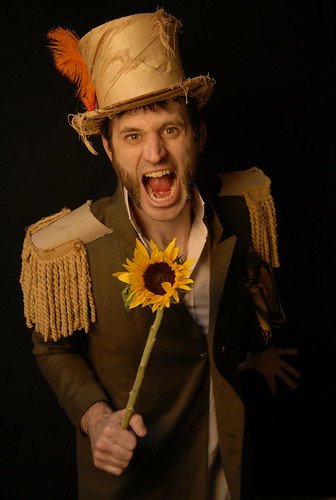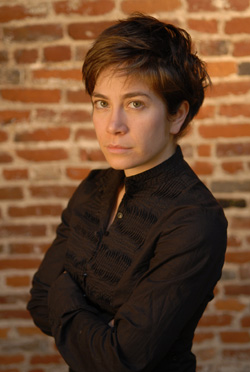- Main question: How does this piece focus on Norton?
- In the first half, I'm following a narrative, but I lose that narrative in the 2nd half, right after the scarf scene.
- Some of the "screams" are working, and others are not.
- How to use words to describe what's happening. Good to get background on characters, but better to rely on movement to explain who they are.
- Background info about each character was cool but confusing: what about them is interesting to the world of the piece? Where is each character going?
- Did these characters exist all in the same place-time in history, or is this a fictional encounter? Seems important to stress the "what-if" factor, so that the fictional aspects are distinguished from the historical.
- Choreography emerges like a "hyperbolic insertion" into "cinematic" tableaus... can you go further with the hyperbole? In the scarf scene, for example?
- There are circular aspects to the piece, like a kind of stirring up
- The use of toes and fingers stood out. The dancers have very articulate digits!
- We want to know more about Murietta.
- We forget that the piece is about Norton, but the focus comes back to him at the end. Full circle.
- A section of the audience will be familiar with these characters, and others will not. How to cater to both at the same time? For example, the reference to Isadora's death? Need to say how she died? We want to complement what people already know and not be didactic... but at the same time we need to get those less familiar with San Francisco's history on the same page.
- Andrew can be more "regal."
- Perhaps Marina's character can be more tense, as a contrast to the others.
- Face-making portrait (intro) can have bigger angles so we know who to focus on.
Tuesday, March 17, 2009
work-in-progress feedback
Today we had an informal work-in-progress showing at the ODC Dance Commons, where we regularly rehearse. We are now about 1/3 of the way through the process of creating "The Improbable Reign," which is a crucial moment to check in with some outside eyes. There is still time to make dramatic changes, and scratch ideas that aren't working. I assembled some of the highlights of the feedback session below, in no particular order. These are not direct quotes. I'm paraphrasing. To those of you who made it and shared your thoughts, you know who you are, and I thank you dearly. Your feedback is extremely valuable. Video excerpts from the showing are coming soon!!!
Subscribe to:
Post Comments (Atom)


Being in the piece makes it somewhat difficult to get a sense of the viewing experience of the piece.
ReplyDeleteBut anyways...
What is the take-home message? Are we informing the audience of historical characters who have a geographic commonality? Using those characters to create an entertaining experience for the viewer? Infotainment?
In terms of the logic/tool/aesthetic triangle, what is the logic? And how is that separate from the how we are showing the characters and the what we are using to show the characters.
Catering to two different crowds - those who know the character and those who don't -...Don't cater. You won't know how much your audience knows of the characters. And trying to get somewhere in between will get you into mush.
What would happen if Murrieta, Norton, Duncan, Coit, and Coombs were somehow in the same time/space together? But then are the characters the means or the end? Ahhh...so many possibities...
Art is made because of limitations, not despite limitations.